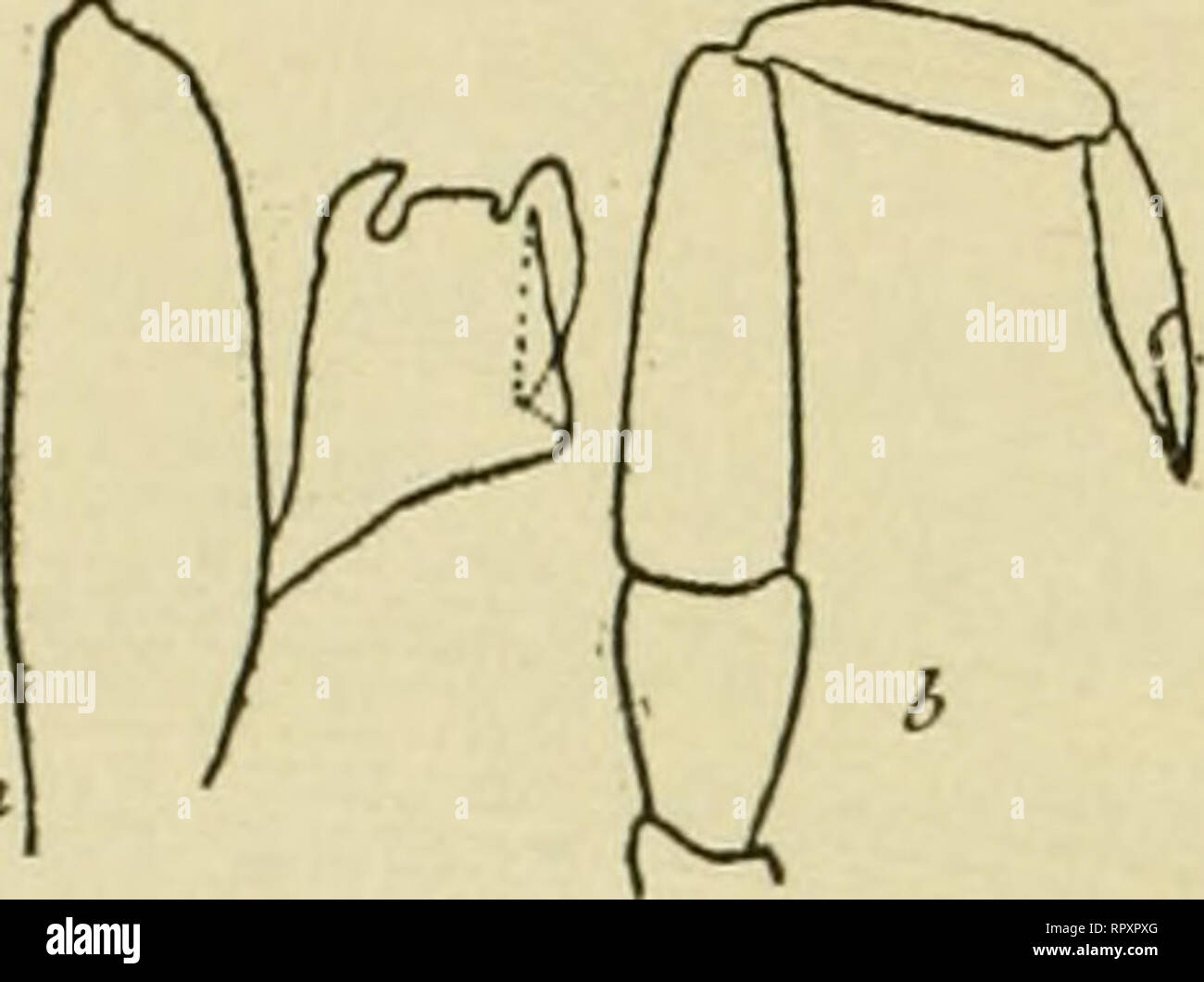. Alaska ... Natural history; Scientific expeditions. 148 RATHBUN as body. The dactylus of the external maxilHpeds is subspatulate, fully twice as long as broad. The chelae of the first pair of feet are narrow and elongate, as in the succeeding pairs. Exopodites of first abdominal appendages not so long as the carapace; between the bases of these appendages is a sharp spine, equally devel- oped in both sexes. The thelycum consists of a horizontal convex sub- triangular plate or tubercle, placed between the third pair of legs, followed by two transverse plates between the fourth and fifth pairs

Image details
Contributor:
Library Book Collection / Alamy Stock PhotoImage ID:
RPXPXGFile size:
7.1 MB (139.2 KB Compressed download)Releases:
Model - no | Property - noDo I need a release?Dimensions:
1829 x 1366 px | 31 x 23.1 cm | 12.2 x 9.1 inches | 150dpiMore information:
This image is a public domain image, which means either that copyright has expired in the image or the copyright holder has waived their copyright. Alamy charges you a fee for access to the high resolution copy of the image.
This image could have imperfections as it’s either historical or reportage.
. Alaska ... Natural history; Scientific expeditions. 148 RATHBUN as body. The dactylus of the external maxilHpeds is subspatulate, fully twice as long as broad. The chelae of the first pair of feet are narrow and elongate, as in the succeeding pairs. Exopodites of first abdominal appendages not so long as the carapace; between the bases of these appendages is a sharp spine, equally devel- oped in both sexes. The thelycum consists of a horizontal convex sub- triangular plate or tubercle, placed between the third pair of legs, followed by two transverse plates between the fourth and fifth pairs. The anterior of these two plates is subquadrilateral, narrowest in front; the posterior one is somewhat fan-shaped, narrow behind, its anterior margin rounding and with a blunt median point. The andricum or petasma consists of a pair of small leaves not in contact, each of which is attached at Fig. 8q. Gennadas horealis. , -iia ••tti s. Station 3783. a. Petasma its proximal cud. At cxtremities of distal margm (X 6S). i. Foot of first pair , , , , , . , . (X4). are two lobes or teeth, the outer one of which is curved. The inner portion is partially folded to form an irregular longi- tudinal plait. The sixth abdominal somite is carinate; it is more than twice as long as the fifth. The telson has a small lateral spine at its posterior fourth, two spines at the tip. The caudal swimmerets are broken in all our specimens. Dimetisiojts.—Male, length of carapace and rostrum 13.6 mm., length of abdomen on middle line 29 mm. Female, length of carapace and rostrum 18 mm., length of abdomen on middle line 37 mm. Distrihiiion.—'^oxth. of Rat Islands, Aleutians, 850 fathoms {Alba- tross station 3784), 2 , J ; off Copper Island, Kamchatka, 1567 fathoms, station 3783 (type locality), 1^, 2$. Very near G. parvus Bate, but differs in the longer rostrum, the presence of a lateral spine on the telson, the greater length of the anten- nal scale, the elongated chelae of the first pair of fee